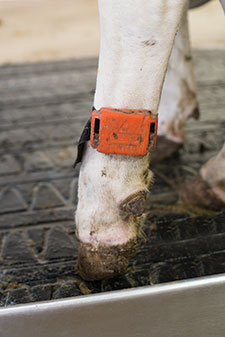 People with good cow sense are irreplaceable, but there are exciting new tools that can help producers make more timely and informed decisions.
People with good cow sense are irreplaceable, but there are exciting new tools that can help producers make more timely and informed decisions."How we monitor cows has changed," explained Amanda Stone, an Extension Assistant and PhD student at the University of Kentucky, during her presentation at the Professional Dairy Producers of Wisconsin Business Conference. "We are now able to put numbers on things farmers can ‘sense,'" she said.
Stone was talking about precision dairy farming technologies, a new array of tools available to assist producers with heat detection, health monitoring and more. She briefly reviewed some precision dairy technologies that currently exist, including:
Thermometers to monitor spikes or drops in body temperature.
Accelerometers that measure lying and standing time.
Pedometers to track steps taken.
Real time location systems to identify an animal's position within a facility.
3-D cameras that can automatically body condition score cows.
Rumination monitors that track cud chewing.
Newer to the market are also some multi-parameter systems that are able to track several areas at once.
These technologies can provide some valuable additions to monitoring cows, but Stone did offer a few words of caution to producers. For starters, the reality is that many technologies are in their infancy right now, with only limited use on commercial herds at this point. Tools will likely change and improve as use becomes more widespread.
Second, even though a technology can provide useful information, it may not return on your investment. "Economics must be considered," she said. "If the information is not utilized, it is useless."
And third, Stone pointed out that not all technologies are one size fits all. "Precision dairy farming technologies are not the right choice for all producers," she said. "Consider the people factors on your farm."
Ideally, these technologies would explain a biological process in a way that can be translated into a meaningful action on farm, she explained. The technology also needs to be low cost, flexible, robust and reliable. And, Stone reiterated, a producer with good cow sense must be involved.
"No matter how much a technology can do, it will not remove the producer from the equation," Stone said. "Producers still need to make the end decision."

The author is an associate editor and covers animal health, dairy housing and equipment, and nutrient management. She grew up on a dairy farm near Plymouth, Wis., and previously served as a University of Wisconsin agricultural extension agent. She received a master's degree from North Carolina State University and a bachelor's from University of Wisconsin-Madison.









